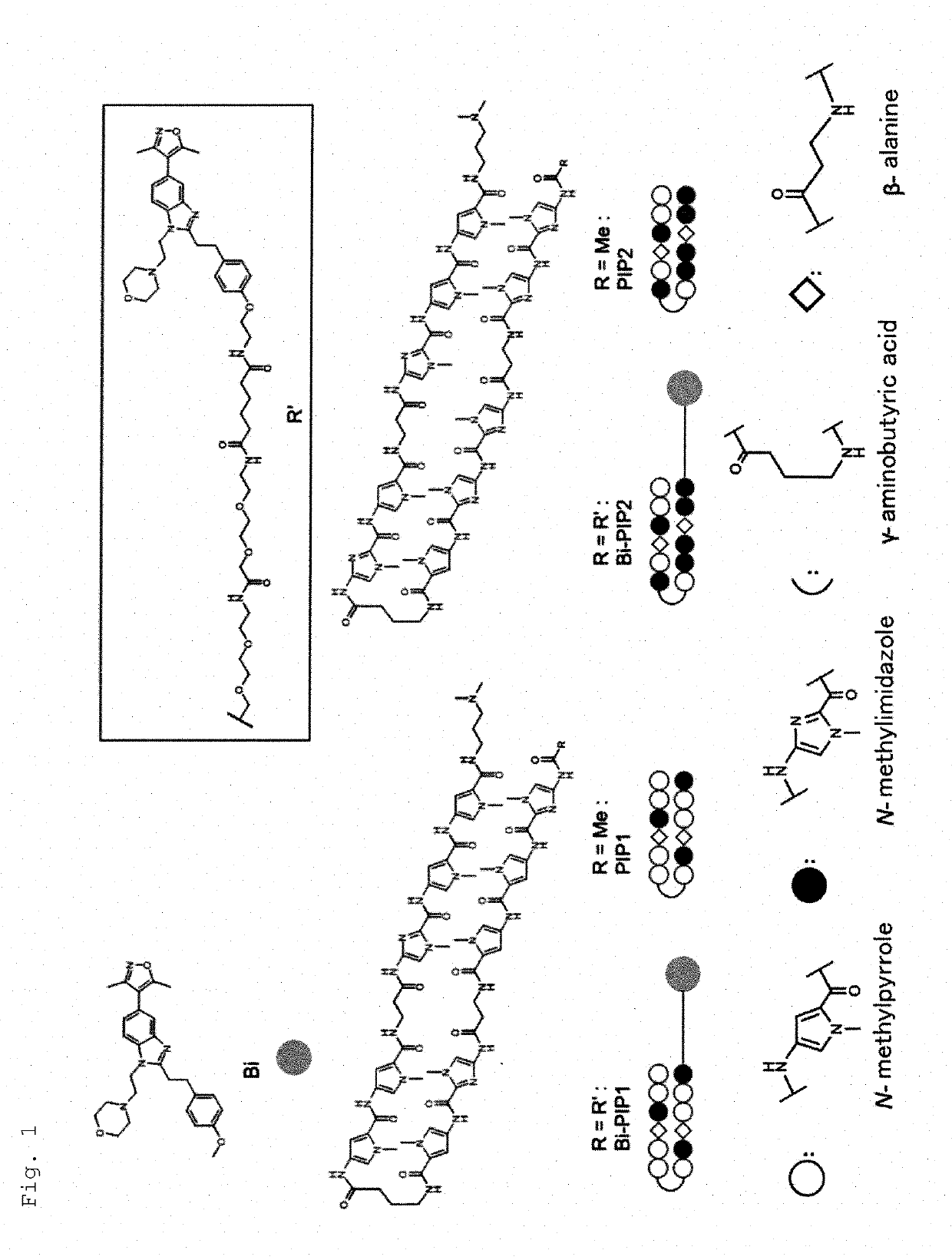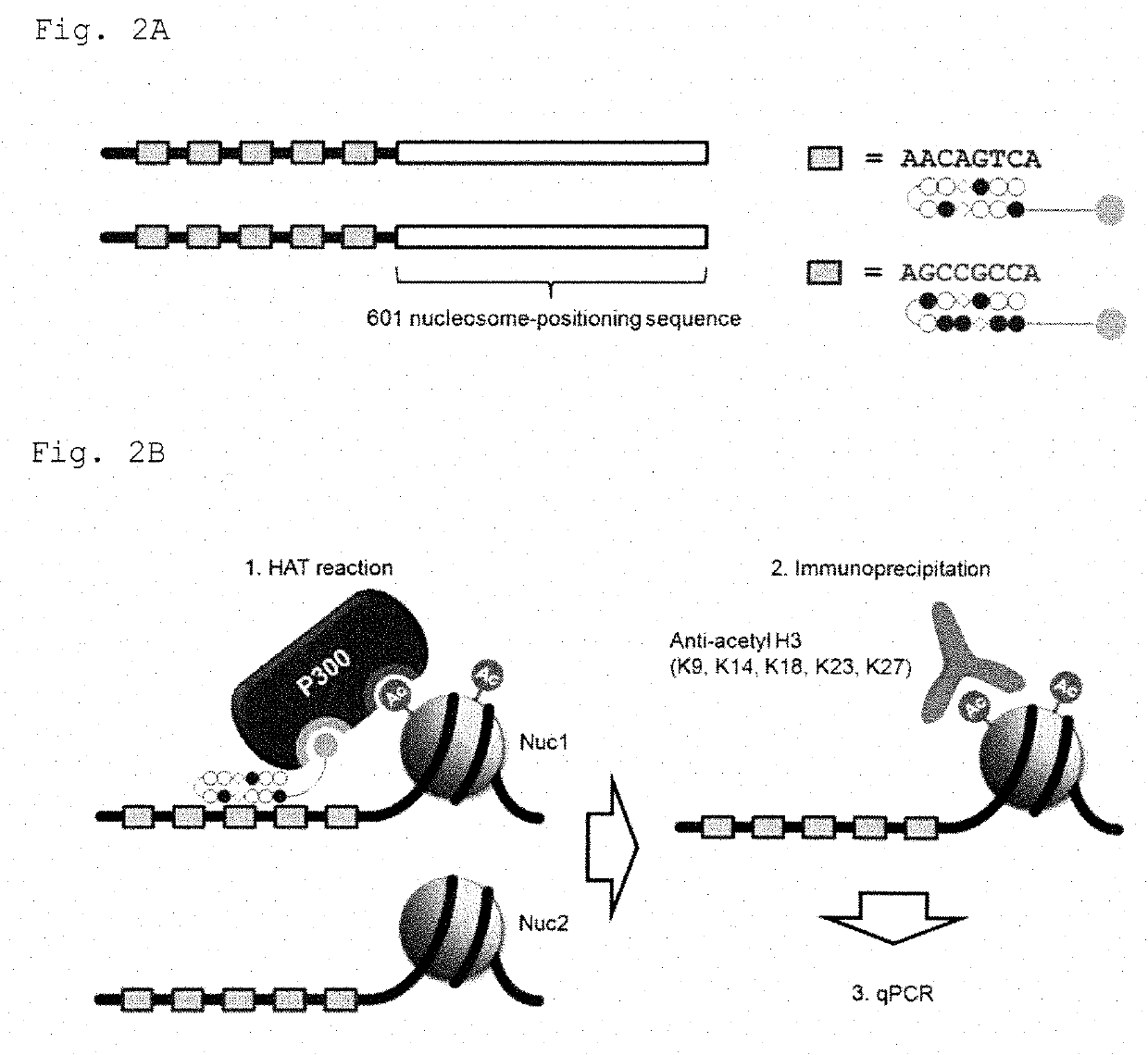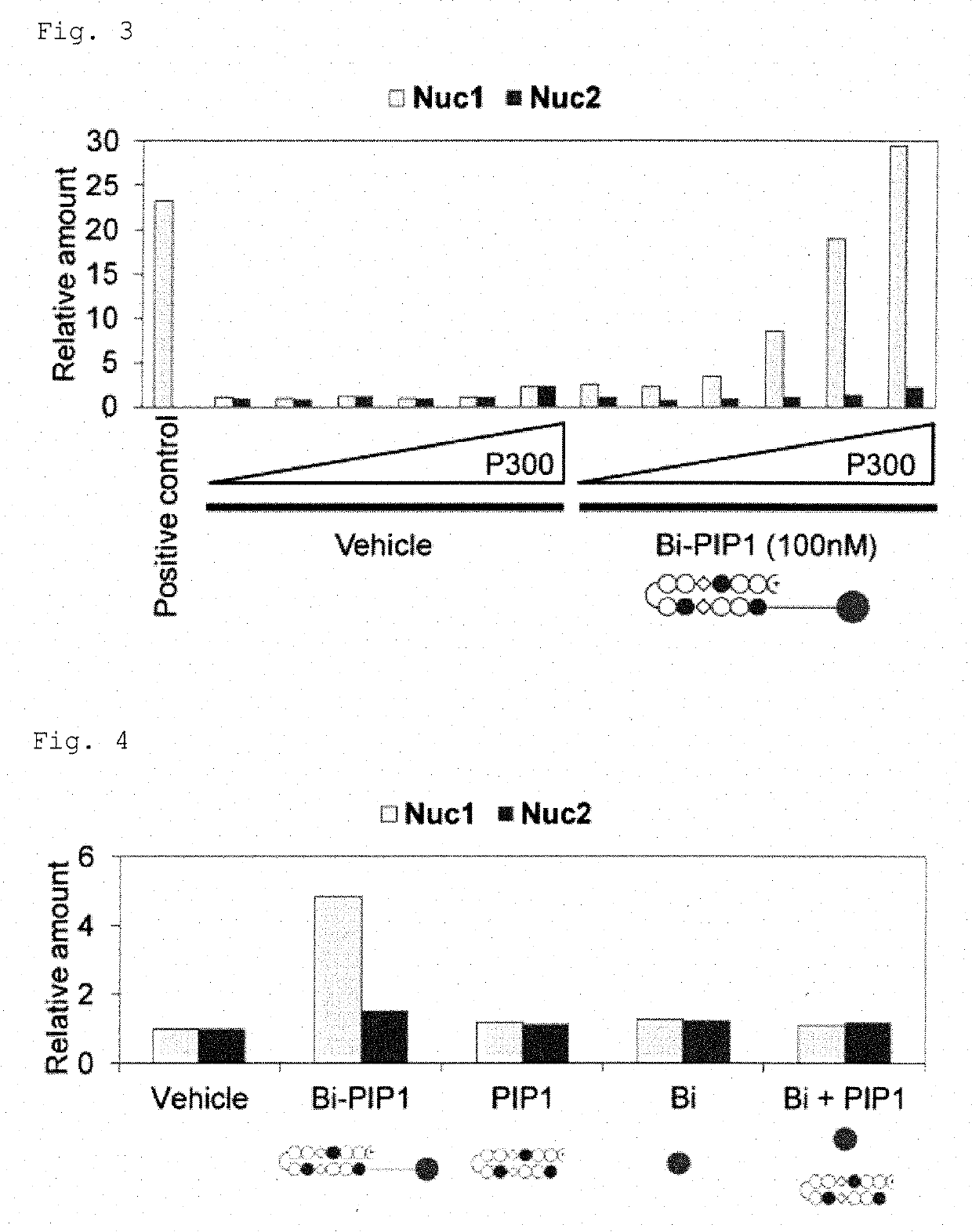Sequence-selective gene expression regulators
a gene expression regulator and sequence-selective technology, applied in the field of sequence-selective gene expression regulators, can solve the problems of weakened interaction between, inability to control the level of gene expression activation, and limited control of histone acetylation at any region of interes
- Summary
- Abstract
- Description
- Claims
- Application Information
AI Technical Summary
Problems solved by technology
Method used
Image
Examples
example 1
d Synthesis of Bi-PIP
(1) Design and Synthesis of BD Inhibitors
[0075]As the targeted BD-containing protein, coactivator P300 / CBP family of proteins was selected. P300 / CBP is HAT that plays a central role in transcriptional activation in eukaryotic cells. P300 / CBP has both HAT domain and BD. A P300 / CBP-selective BD inhibitor (CBP30) having 5-isoxazolyl-benzimidazole was previously reported (Hay et al., J. Am. Chem. Soc. 2014, 136, 9308-9319). As the BD inhibitor, one of the CBP30 derivatives which showed a moderate binding affinity to the BD of CBP was used. The BD inhibitor was synthesized according to the previous report (Hay et al., supra). Then, a BD inhibitor unit with primary amine was designed and synthesized by a conventional method.
Methyl 3-(4-(2-((tert-butoxycarbonyl)amino)ethoxy)phenyl)propanoate (11)
[0076]Methyl 3-(4-hydroxyphenyl)propanoate (9) and tert-butyl (2-hydroxyethyl)carbamate (10) were synthesized by a known method. Methyl 3-(4-hydroxyphenyl)propanoate (550 mg, 3...
example 2
of Histone Acetylation on Nucleosomes Having Target DNA Sequences by Bi-PIP
(1) Sequence-Selective Histone Acetylation on Nucleosomes by Bi-PIP
[0090]To test sequence-selective histone acetylation by Bi-PIP, a biochemical assay (HAT reaction-in vitro ChIP-qPCR) was established by combining HAT reaction followed by immunoprecipitation utilizing reconstituted nucleosomes as reported previously (Nguyen et al., Nat. Methods 2014, 11, 834-40) and quantitative polymerase chain reaction (qPCR) (FIGS. 2A to 2C).
[0091]Histone Expression and Purification
[0092]Human histone proteins (H2A type1-B / E, H2B type1-K, H3.1 and H4) were expressed in Escherichia coli BL21 (DE3) utilizing a T7 promoter-driven expression vector, pET22b. Crude histones in a urea buffer (6 M urea, 20 mM HEPES-KOH (pH 7.5) and 1 mM 2-mercaptoethanol) were purified by positive ion exchange chromatography utilizing a HiTrap SP HP column (GE Healthcare) on AKTA pure 25 protein purification system (GE Healthcare). A urea buffer c...
example 3
Gene Expression Activation Inside Living Cells by Bi-PIP
[0108]To evaluate if Bi-PIPs could function in a cellular environment, experiments were performed. As an initial experiment, a HAT reaction-in vitro ChIP-qPCR assay was performed using a HeLa nuclear extract as the HAT resource instead of recombinant P300 according to the method as described in Example 2-(1). The HeLa nuclear extract containing not only P300 / CBP but also other cellular HATs and HDACs provided a cell-like environment similar to that observed with only recombinant P300. Briefly, the HeLa nuclear extract (0.3 μL / reaction) was added to a mixture of Nuc1 and Nuc2 up to 2% v / v in the reaction mixture. The reaction mixture was incubated with or without 100 nM Bi-PIP1, and subjected to ChIP and then qPCR. As control, the same experiment was performed using neither the Hela nuclear extract nor Bi-PIP1.
[0109]Results are shown in FIG. 6. In FIG. 6, relative amounts of Nuc1 and Nuc2 normalized to the value of the [Nucelar ...
PUM
 Login to view more
Login to view more Abstract
Description
Claims
Application Information
 Login to view more
Login to view more - R&D Engineer
- R&D Manager
- IP Professional
- Industry Leading Data Capabilities
- Powerful AI technology
- Patent DNA Extraction
Browse by: Latest US Patents, China's latest patents, Technical Efficacy Thesaurus, Application Domain, Technology Topic.
© 2024 PatSnap. All rights reserved.Legal|Privacy policy|Modern Slavery Act Transparency Statement|Sitemap



